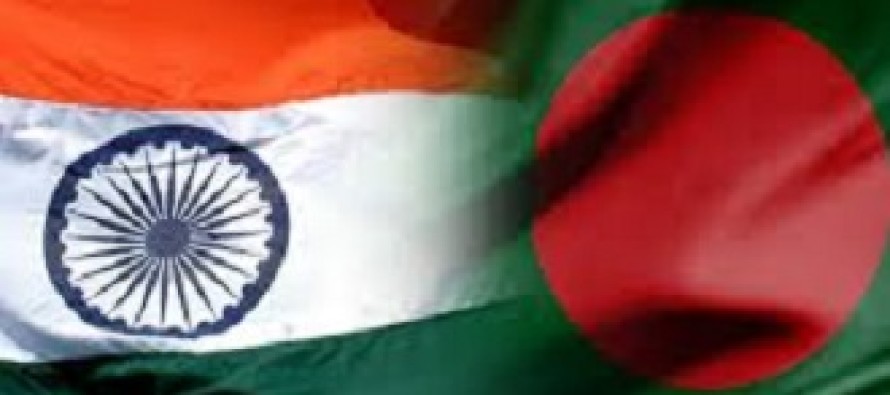Bangladesh –India retired High Commissioners’ Summit: What is the value in it?

Before I discuss the subject-matter of the title, let me state a few facts on Bangladesh-India relationships.
Bangladesh-India relations are not restricted to only between governments but exist between peoples of the two countries independently of the policies of the governments because the ties of history and culture of the two countries are so pervasive from ancient days.
India is 22 times larger in territory than that of Bangladesh and this asymmetrical size has naturally an impact on the minds of people of Bangladesh in what India does and does not with Bangladesh.
It is noted that in February 1972, Bangabandhu Sheikh Mujibur Rahman, Prime Minister of Bangladesh met with the Prime Minister Indira Gandhi in Kolkata and a joint statement was issued in which it was stated “Bangladesh and India would live in eternal friendship as brothers” since the two countries had “an identity of ideals, outlook and values and would live in amity”.
Within a few years, the sentiment expressed therein was found to be too idealistic because both countries failed to resolve many bilateral disputes, such as sharing of waters of the Ganges and sea boundary with India.
In the subsequent years, bilateral relations went through a cycle of sea-saw game depending on the political ideology of the government in power in each country. The past is well behind us and currently the existing friendly relation between the two countries could be described as the best of all times.
This is because Bangladesh Prime Minister Sheikh Hasina’s landmark four-day visit on 10-13th January 2010 to India created an environment of mutual trust that sought to lay the foundation to a much more mature, stable and fruitful relationship with India through a – 51-paragraph Joint Statement.
Following the visit, the Hasina government had moved quickly to address Delhi’s concerns on cross-border terrorism (including expelling top ULFA insurgents to India) and connectivity to the North-East.but reciprocal actions from the Indian side could not match with those of Bangladesh.
Most important of all, the gloss of the improved relations was dimmed due to the failure of the conclusion of the Teesta water sharing and the non- ratification of land boundary agreement as envisaged by the 1974 Mujib-Indira Land Boundary Agreement.
Given the above context, the Department of International Relations of Dhaka University (Prof. Imtiaz Ahmed. Project director of the event) together with the India-Bangladesh Foundation conceived appropriately and organised the summit of the retired High Commissioners for two days in Dhaka on 14th-15th November to help define a constructive direction on bilateral relations, the momentum of which seems to have stalled..
This has been a unique event and for the first time, the organizers were able to gather in a room fourteen retired top diplomats from both countries—six from India and eight from Bangladesh. Each of the former diplomats had hands-on experiences for more than three or decades. They witnessed ups and downs in bilateral relations when they were in the government.
On the first day, they spoke on three items-lessons from the past, changes & hurdles in contemporary times and its future direction of bilateral relations.
During the discussion, the former Indian diplomats, while acknowledging the slow implementation of Indian pledges for domestic reasons, were hopeful that they would be settled soon.
While Bangladeshi diplomats stated that non-implementation of agreement created a gap between India’s promises and actions and this does not help in removing the negative perception of public in Bangladesh. The earlier is the implementation, it is better to restore dynamism in bilateral relations.
Both sides reiterated that there has been a qualitative change in bilateral relations since 2009 and that it cannot be reversed in future irrespective of political parties in power (AL or BNP) in Bangladesh..
Both sides talked about the need for deeper engagement in all sectors with Bangladesh and some of them focused on free flow of goods and services including investment and financial services between the countries. Both sides believed that if a holistic approach in the utilisation of natural resources was undertaken, it would benefit of the peoples of both countries.
It was emphasised that the series of geopolitical developments in the Asia-Pacific region taking place all at once is certainly overwhelming: It is an era of change due to the ongoing power shift and power diffusion. In this context bilateral relations needs to be adapted to make it relevant and effective.
Both sides also agreed the urgency and the need for strengthening cooperation at sub-regional and regional levels in particular within the ambit of SAARC and BIMSTEC.
After they spoke, the audience put pointed questions to the diplomats which included failure of agreement of sharing of Teesta water , border killing, and connectivity. The diplomats responded and it was lively and spirited interaction.
The second day was closed session and they all agreed to form an Alumni of the former High Commissioners to continue regular biennial summits. The next summit is proposed to be held in 2016 in India.
At the end of the two-day event, the “Dhaka Declaration” was issued to the media. The significance of such event lies in the fact whether the contents of the Declaration are considered by the two governments in mapping out their relations in future.


